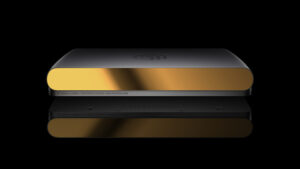
Swiss Re finds Luminar lidar helps avoid up to 25% more collisions, now standard on EX90
By onTechnology
Luminar has launched its next-generation lidar sensor available to the mass market and released the results of a safety study on its current lidar system by Swiss Re.
The company also announced the mainstream production of lidar sensors as standard equipment for the Volvo EX90.
Swiss Re tested Luminar’s lidar and software driving system in a scenario-based protocol designed to test:
-
- Collision scenarios within a controlled testing environment;
- Collecting vehicle response data and converting it into safety performance scores; and
- Benchmarking the performance of the vehicle being tested against related and appropriately selected vehicles and driving systems in the market.
The collision scenarios used in the study were drawn from Swiss Re’s accidents database and based on real-world accident statistics with 1 billion vehicle years of exposure and 70 million claims.
Swiss Re says it selected real-world scenarios calibrated to a controlled test track to see whether the emergency system activates and how quickly it’s triggered. Two scores were given: frequency and mitigation power. The first measures the percentage of real-world accidents the car can avoid in a controlled environment because of the system. The latter measures how much the car technology mitigates potential collision impact power by reducing impact speed.
Thirty-five accident scenarios and nearly 800 tests (using different scenario settings) were conducted on the Luminar-equipped vehicle.
Swiss Re compared Luminar’s system performance to vehicles equipped with Level 2 advanced driver assistance systems (ADAS), or higher.
“Our results show that the Luminar system-equipped vehicle is expected to avoid up to 25% more collisions than the same vehicle without the Luminar equipment and it is expected to enhance the mitigation power by up to 29%,” Swiss Re wrote. “Compared to the two best vehicles in Swiss Re’s benchmark, the difference in expected frequency is up to 27%, while in mitigation power it is up to 40%. This means that the Luminar-equipped vehicle is expected to avoid more collisions as well as decrease the impact of collisions when they happen.”
Luminar said the first and second best-performing vehicles compared to the Lmminar-equipped vehicle were 2022 model year vehicles of top European car brands equipped with the latest and fullest set of camera and radar-based technology available on the market. Neither company shared the makes and models of those vehicles.
“Luminar will leverage the safety study as an industry benchmark to launch a digital insurance product which is expected to reduce the cost of insurance for car buyers of Luminar-equipped vehicles,” the company said. “Luminar expects to be licensed to sell insurance in 13 states by the end of the year and plans to expand internationally starting next year.”
Luminar Halo, the company’s next-generation lidar technology platform, is designed for mass adoption by mainstream consumer vehicles. According to Luminar, the platform will incorporate four chip technologies from Luminar Semiconductor Inc. to enable four times better performance, three times size reduction, two times thermal efficiency improvement, and two times cost improvement.
“Luminar Halo is also expected to provide backward system compatibility to existing customers of its current generation sensor family, Iris,” the company said. “It also will boast a sleeker integration profile, seamlessly blending into the roofline of a car or behind the windshield, and is expected to be under 1 inch in height, under 1 kilogram in weight, and use approximately 10 watts of power consumption.
“The Luminar Iris family of lidar was designed to kick off a new global industry for safety and autonomy on premium vehicles, whereas Luminar Halo is designed to focus more on rapidly scaling our vision to mainstream consumer vehicles and to fulfill our mission to democratize next-generation safety.”
In addition, Luminar says a new partnership with vehicle software developer, Applied Intuition, will provide a joint hardware and software solution for automakers to test and validate assisted driving and automated driving perception systems. This will be possible using Applied Intuition’s physics-based sensor simulator, Sensor Sim, with integrated sensor models of Luminar’s lidar, according to Luminar.
Automakers will be able to accurately test and validate Luminar’s lidar-based software systems in virtual environments while reducing testing costs and accelerating time to market, the company said.
In January, Luminar Founder and CEO Austin Russell debuted Automatic Emergency Steering (AES) using the company’s new Iris+LiDAR sensor with an audience at the Consumer Technology Association Conference (CES) in Las Vegas.
It was demonstrated how a Luminar-equipped vehicle could swerve around a pedestrian dummy crossing its path on a demonstration track. The vehicle could then immediately deploy automatic emergency braking (AEB) when it came across a tire lying in the roadway. AEB traditionally has difficulty detecting dark objects like tires because of little light reflection.
Images
Featured image: Luminar Halo lidar sensor (Business Wire)
